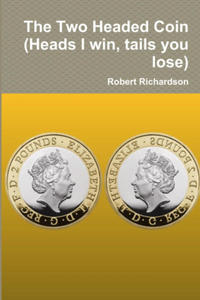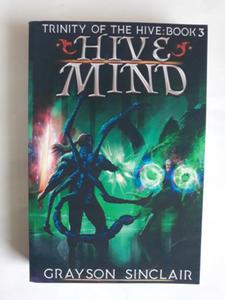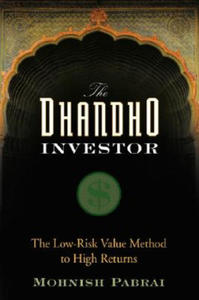libristo tails i lose 2544418
- znaleziono 6 produktów w 5 sklepach
The Two Headed Coin (Heads I win, tails you lose) Lulu.com
Książki / Literatura obcojęzyczna
Sklep: Libristo.pl
Tails I Lose
Książki Obcojęzyczne>Angielskie>Society & social sciences>Society & culture: general>Social issues & processes>Illness & addiction: soc...
0x0140ddf100000000
Sklep: Gigant.pl
Hive Mind Trinity of the hive 3 Grayson Sinclair
Kultura i rozrywka > Książki i Komiksy > Książki obcojęzyczne > Po angielsku > Fantasy, science fiction, horror
Heads you win. Tails I lose.Everything is falling apart.Magnus is hunting Eris, and even the gods fear him. As if that weren
Sklep: otoksiazka24.pl
The Dhandho Investor John Wiley & Sons Inc
Książki / Literatura obcojęzyczna
A comprehensive value investing framework for the individual investor In a straightforward and accessible manner, The Dhandho Investor lays out the powerful framework of value investing. Written with the intelligent individual investor in mind, this comprehensive guide distills the Dhandho capital allocation framework of the business savvy Patels from India and presents how they can be applied successfully to the stock market. The Dhandho method expands on the groundbreaking principles of value investing expounded by Benjamin Graham, Warren Buffett, and Charlie Munger. Readers will be introduced to important value investing concepts such as "Heads, I win! Tails, I dona t lose that much!," "Few Bets, Big Bets, Infrequent Bets," Abhimanyua s dilemma, and a detailed treatise on using the Kelly Formula to invest in undervalued stocks.Using a light, entertaining style, Pabrai lays out the Dhandho framework in an easy--to--use format. Any investor who adopts the framework is bound to improve on results and soundly beat the markets and most professionals.
Sklep: Libristo.pl
Letter from America Penguin
Powieści i opowiadania
When Alistair Cooke retired in March 2004 and then died a few weeks later, he was acclaimed by many as one of the greatest broadcasters of all time. His Letters from America, which began in 1946 and continued uninterrupted every week until early 2004, kept the world in touch with what was happening in Cooke's wry, liberal and humane style. This selection, made largely by Cooke himself and supplemented by his literary executor, gives us the very best of these legendary broadcasts. Over half have never appeared in print before. It is a remarkable portrait of a continent - and a man. Fred Astaire 26 June 1987 Movie stars don't make it. Nor statesmen. Not Prime Ministers, or dictators unless they die in office. Not even a world-famous rock star, unless he's assassinated. But last Monday, none of the three national television networks hesitated about the story that would lead the evening news. On millions of little screens in this country and I don't doubt in many other countries around the world, the first shots were of an imp, a graceful wraith, a firefly in impeccable white tie and tails. And for much longer than the lead story usually runs, for a full five minutes on NBC, we were given a loving retrospective of the dead man, ending with the firm declaration by Nureyev that 'He was not just the best ballroom dancer, or tap dancer, he was simply the greatest, most imaginative, dancer of our time.' And the newsmen were right to remind us of the immortal comment of the Hollywood mogul, who, with the no-nonsense directness of an expert, reported on Fred Astaire's first film test: 'Has enormous ears, can't act, can't sing, dances a little.' That Hollywood mogul, long gone, spent his life ducking round corners, to avoid being identified as the oaf who looked in the sky and never saw the brightest star. However, that expert opinion was, as the lawyers say, controlling at the time and in Astaire's first movies, there was no thought of allowing him to act or sing. But not for long. And thanks to the invention of television, and the need to fill vast stretches of the afternoon and night with old movies, it has been possible for my daughter, for instance, to claim Fred Astaire as her favourite film star from the evidence of all the movies he made fifteen, ten, five, three years before she was born. When I got the news on Monday evening here, and realized with immediate professional satisfaction that the BBC had smartly on hand a musical obituary tribute to him I put together eight years ago, I couldn't help recalling the casual, comic way this and similar radio obituaries came about. I was in London at the end of 1979, and Richard Rodgers - one of the two or three greatest of American songwriters - had just died, I believe on New Year's Eve or the night before. Britons, by then, were getting accustomed, without pain, to making what used to be a two-day Christmas holiday into a ten-day much-needed rest. For all laborious research purposes, the BBC was shut up. And there was no retrospective programme on the life and music of Richard Rodgers in the BBC's archives. Of course, in a gramophone library that looks like an annex to the Pentagon, there were hundreds, perhaps thousands, of recordings of his songs. The SOS went out to a writer, a producer, and - I presume - a man who had the key to the gramophone library. The silent place was unlocked, and the three of them laboured through the day to put together an hour's tribute to Richard Rodgers. It was done. It was competent enough, but rushed to an impossible deadline. This hasty improvisation happened just when my own music producer and I, who had enjoyed working together for six years or so on American popular music, were wondering what we could offer next. We'd done a sketch history of jazz, through individuals. We'd gone through all the popular music of the 1920s, 1930s and 1940s, and were stumped for a new series, at which point I asked if we mightn't go and talk to the head of the channel, network or whatever. We went in, and the genial boss asked me what we had in mind. 'A morgue,' I said. A what? 'Where', I asked, 'is your morgue?' He was not familiar with the word, a newspaper term. 'Well,' I said, 'all newspapers have them.' 'How d'you mean?' 'If, I explained, 'Mrs Thatcher died tonight and you woke up and read a two-sentence obituary, you'd be rightly outraged. But if you saw a two-page obituary, you'd take it for granted. When d'you suppose it was written?' 'That's right,' he said thoughtfully. What I was proposing was a morgue of the Americans eminent in popular music and jazz, so they'd not get caught short again. A splendid idea, the man said; pick your stars. We made a list and were commissioned to return to America and finish all of them. Naturally, we looked at a calendar, and birthdates of Hoagy Carmichael, Earl Hines, Harold Arlen, Ethel Merman, Stephane Grappelli, Ella Fitzgerald. But then, in a spasm of panic, we thought of two giants - if the word can be used about two comparative midgets: Irving Berlin and Fred Astaire. Berlin was then 91. And Fred Astaire was just crowding 80. The boss man, to whom the idea of a morgue had been, only a few minutes before, quaint if not morbid, wondered what we were waiting for. Better get busy, at once, on Berlin and then on Astaire. I remember doing the Astaire obit, then and there, while I was still in London. Meanwhile, we'd simply pray every night that the Lord would keep Irving Berlin breathing till I could get home and get busy. I remember being picked up in a car by a charming young girl to get to the BBC and record my Astaire narration - there wasn't a moment to lose. She asked me, in the car, what the script was that I was clutching. 'It's an obituary', I said, 'of Fred Astaire.' 'Fred Astaire,' she shrieked, 'dead?' and almost swerved into a bus. 'Of course, he's not dead,' I said, 'but he's going to be one day.' She, too, was new to the institution of a morgue. I recalled that when I was a correspondent for a British paper in the United States, and when for example. Dean Acheson was appointed Secretary of State, the first cable I had from my editor said, 'Welcome Acheson obituary soonest.' How ghoulish, she said. I imagine that to two generations at least, it's assumed that Fred Astaire, this slim, pop-eyed newcomer to Hollywood who couldn't act, couldn't sing, danced a little, only made a fool of the mogul through the movies he made, with Ginger Rogers, in the mid- and late 1930s. But long before then, from the mid-1920s on, he was already an incomparable star - as a dancer - to theatre audiences both in New York and in London. Perhaps more in London than anywhere, certainly in the 1920s, with the early Gershwin hits, Funny Face and Lady Be Good, and lastly, in 1933, in Cole Porter's Gay Divorce (which was the title of the theatre show; Hollywood would not then allow so shocking a title and called the movie version, The Gay Divorcee). Of all the thousands of words that have been written this week, and will be written, there is a passage I went back to on Tuesday night which, I think, as well as anything I know, sums up Astaire's overall appeal - the appeal that takes in but transcends one's admiration for his dancing and for his inimitably intimate singing style. This was written in November 1933, by a theatre critic who had so little feel for dancing that he marvelled why London should go on about 'Mr Astaire's doing well enough what the Tiller Girls at Blackpool do superbly'. The critic, the writer, was James Agate, the irascible, dogmatic, opinionated but brilliant journalist, and I believe the best critic of acting we have had this century. He is writing his review of Gay Divorce, after declaring yet again his contempt for musical comedy as an entertainment for idiots, deploring the play's plot and the acting and hoping 'Micawberishly, for something to turn up'. 'Presently,' he wrote, 'Mr Fred Astaire obliged, and there is really no more to be said.' Except
Sklep: Albertus.pl
100 dram, Znaki zodiaku - Ryby z cyrkonią (Pisces 19.02-20.03), 2008 Mennica Polska: Numizmatyka
Kategorie > Zwierzęta świata
Seria: "Znaki zodiaku" Emitent: Narodowy Bank Armenii Producent: Mennica Polska S. A. Stan zachowania monety: I (menniczy) Nominał: 100 dram Srebro: Ag 925 Techniki dodatkowe: tampondruk, cyrkonia Stempel: lustrzany Średnica: 38,61 mm Waga: 28,28 g Wielkość emisji: 12.000 szt. Rok emisji: 2008 r. W zestawie: srebrna moneta w kapsule ochronnej, certyfikat auyentyczności Seria srebrnych monet kolekcjonerskich "Znaki zodiaku", łącznie liczy 12 monet, które urzekają swoimi projektami. Na trzeciej monecie z serii ukazano znak Ryby (19.02-21.03). Atrakcyjny i uniwersalny temat, wyjątkowa uroda monet przyozdobionych cyrkonią oraz ich stosunkowo niski nakład powoduje, iż jest to świetny pomysł na elegancki i uniwersalny prezent, jak też ciekawa pozycja do każdego zbioru. This silver commemorative coin depicting Pisces has been issued by the Central Bank of Armenia under the International Program "The Signs of Zodiac". Pisces is a zodiac constellation which lies between Aquarius to the west and Aries to the east. This constellation resembles two roundish objects tied to the same point by a string. According to one of the versions of Greek mythology this constellation represents fish into which Aphrodite and her son Eros transformed in order to escape the monstrous Typhon. The two fish are often depicted tied together with a cord (or their tails) not to lose one another. The astrological period called Pisces takes the period from February 19 to March 21. The coin issued with coloured inks and zircon. Designed by U. Walerzak. Minted in the Mint of Poland. Zodiak - ma dwa znaczenia: astronomiczne i astrologiczne. W astronomii są to nazwy gwiazdozbiorów widocznych na północnej sferze niebieskiej, a w astrologii są to nazwy 12 sektorów ekliptyki, do których przypisano arbitralnie różne znaczenia wykorzystywane przy stawianiu horoskopów. Ekliptykę podzielono w starożytności (mniej więcej przed 2000 lat) na 12 części po 30°, które nazwano od widocznych wtedy tam gwiazdozbiorów, co miało jakiś związek z porami roku, początek przyjęto mniej więcej na wiosnę. Nazwy znaków (nie gwiazdozbiorów) Zodiaku podzielone na cztery pory roku: * Baran, Byk, Bliźnięta - znaki wiosenne, * Rak, Lew, Panna - znaki lata, * Waga, Skorpion, Strzelec - znaki jesienne, * Koziorożec, Wodnik, Ryby - znaki zimowe. Punkty przecięcia równika niebieskiego z ekliptyką nazywamy punktami równonocy: wiosennej i jesiennej. W punktach równonocy znajduje się Słońce, gdy wchodzi w znak Barana (pod koniec marca), względnie znak Wagi (pod koniec września). Za kalendarzowy początek wiosny astronomicznej przyjmuje się punkt równonocy, który wypada przy przecinaniu równika ziemskiego przez Słońce w swoim ruchu rocznym. Jest to przeważnie 21 marca, lub dzień sąsiedni. Analogicznie początkiem jesieni jest 23 września - drugie, jesienne przecięcie równika. W czasach, gdy podzielono ekliptykę na znaki Zodiaku, punkt Barana, który rozpoczyna znak Barana, znajdował się w gwiazdozbiorze Barana. Na skutek precesji osi ziemskiej punkt Barana w ciągu tych 2000 lat przesunął się o około 30°, czyli na początek gwiazdozbioru Ryb. W pasie Zodiaku poruszają się Słońce, Księżyc i planety. Ich pozycja przypada zawsze na jakiś znak Zodiaku (znak, a nie gwiazdozbiór). źródło: Mennica Polska S.A. / Centralny Bank Republiki Armenii / Wikipedia
Sklep: Numizmatyczny.pl
Sklepy zlokalizowane w miastach: Warszawa, Kraków, Łódź, Wrocław, Poznań, Gdańsk, Szczecin, Bydgoszcz, Lublin, Katowice
Szukaj w sklepach lub całym serwisie
1. Sklepy z libristo pl tails i lose 2544418
2. Szukaj na wszystkich stronach serwisu
t1=0.015, t2=0, t3=0, t4=0.011, t=0.015






